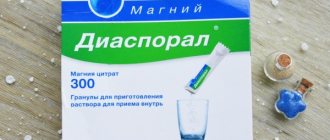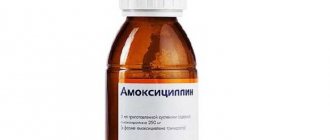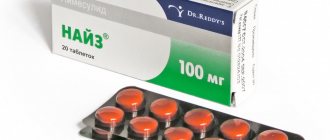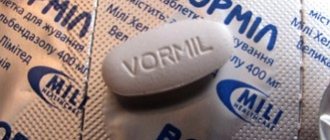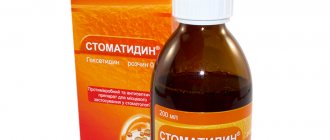Photo: spravtab.ru
Photo: acmespb.ru
Photo: yandex.ru
Photo: yandex.ru
Kirin is a tricyclic antibiotic isolated from fungi of the genus Streptomyces. The drug has a bacteriostatic effect.
You need to know that the combined use of the antibiotic Kirin with lithium preparations leads to an increase in the effect and toxicity of the latter, therefore it is necessary to control the level of lithium in the body. Dispensed with a doctor's prescription!
Pharmacodynamics and pharmacokinetics
Since Kirin is an antibiotic and its structure belongs to aminocyclotols , this drug is characterized by strong antibacterial properties .
It affects bacteria by inhibiting protein synthesis in cells and binding ribosomes to the 30S subunit , thus interfering with microbial cell lysis and their osmotic stability.
The drug is effective in the fight against gonococcal infections , including penicillinase-producing ones , as well as some gram-negative harmful microorganisms.
This medication has no effect on chlamydia or treponema . Kirin is not cross-resistant to antibiotics such as penicillin .
In some cases, strains of gonococcal infections may be endemicly resistant to this drug. However, the average effectiveness of Kirin in treating gonorrhea is 95%. When administered intramuscularly, the drug is absorbed quite quickly.
The drug reaches its maximum concentration in the blood serum approximately an hour after administration. Kirin is excreted in urine after a maximum of 48 hours. The effectiveness of the drug can be assessed (i.e., the growth of harmful crops has stopped) after 96 hours.
Features of good stagnation
Kirin should not be used for the treatment of syphilis, infections caused by C.trachomatis
or non-gonococcal urethritis. Antibiotics, which are administered in high doses over short periods of time to treat gonorrhea, can mask or terminate the symptoms of syphilis that are in the incubation period. If a person is sick with gonorrhea, serological tests for syphilis are carried out at the time of diagnosis. Patients treated with spectinomycin should have repeat serologic tests for syphilis 3 months after completion of treatment.
Diarrhea appears to be associated with Clostridium difficile
(CDAD or pseudomembranous colitis) can occur when almost all antibacterial agents are ingested, including spectinomycin, and the severity level can range from mild diarrhea to fatal colitis.
Treatment with antibacterial agents destroys the intestinal flora, which leads to the overgrowth of C. difficile
, which may be resistant to antimicrobial therapy and necessitate a colectomy. The possibility of CDAD should be considered in all patients with diarrhea following antibiotic treatment. It is necessary to carefully check the medical history in connection with the fact that CDAD, as it was reported, was observed more than 2 months after the cessation of antibacterial agents.
Suspension during pregnancy or breastfeeding.
Since there are currently insufficient clinical data for evaluation, spectinomycin is not recommended for use during pregnancy or breastfeeding.
This is due to the fluidity of the reaction during treatment with vehicles or other mechanisms.
The infusion is low-impact. Several patients reported a loss and increase in body temperature, which can be infused to the point of concentration.
Indications for use
Kirin is prescribed for patients with the following diseases:
- urethritis in the acute phase;
- prostatitis;
- proctitis;
- gonorrheal cervicitis
The medicine is often used to treat diseases caused by Neisseria gonorrhoeae (gonorrhea strain) in case of ineffectiveness or intolerance to antibiotics belonging to the beta-lactam .
In addition, the medicine can serve as a prophylactic after sexual intercourse with partners suffering from gonorrhea .
Side effects
Although in the vast majority of cases Kirin is well tolerated by patients, it is still possible that during treatment such side effects of the drug as: hematuria, skin rash or urticaria, chills, anaphylactic shock, fever and lump at the injection site , insomnia, nausea, dizziness, cholestatic jaundice, hepatotoxicity, decreased diuresis.
In addition, there may be a decrease in the blood serum level of hemoglobin , creatine clearance , as well as hematocrit , and vice versa, an increase in the level of gamma-glutamyltransferase , urea and phosphatase .
Side effects
| Organ systems for MedDRA | Adverse reactions |
| On the side of the immune system | Anaphylaxis, anaphylactic reactions |
| Neurological disorders | Confused, sleepless |
| On the side of the scilicointestinal tract | Nudota |
| On the side of the skin and under the skin | Kropivyanka, macular visipannya |
| Underworld discord and destruction at the place of introduction | Changes at the injection site, including pain at the injection site, chills, increased body temperature |
| On the side of the hepatobiliary system | Cholestatic zhovtyanitsa |
| Tracking results | Decreased diuresis (without damaging the function of nitric acid, which indicates nircic toxicity), decreased creatinine clearance, hemoglobin level and hematocrit, and increased level of iron phosphatase, blood nitrogen and Al AT |
Instructions for use of Kirin (Method and dosage)
Before using the medicine, you should properly prepare the injection solution.
To do this, you need to mix the suspension powder with a solvent. One bottle of powder after mixing with solvent will give 5 ml. liquid solution for intramuscular injection, the composition of which will contain 400 mg/ml of the active component spectinomycin .
The prepared suspension must be used immediately; its remains cannot be stored or reused.
For injections with Kirin, a needle 40 mm long is suitable. and a diameter of 0.8 mm. For adult patients, a single dose of 5 ml is recommended for intramuscular administration. (2 years old). The injection should be given deep into the gluteal muscle (upper outer quadrant).
It is not prohibited to administer the recommended dose in two stages. In particularly severe cases, the daily dose of Kirin can be increased to 10 ml. (4 years old). When using the drug in the treatment of children over 3 years of age, the dosage is calculated as follows - 40 mg/kg with a total body weight of up to 45 kg. and 2 g intramuscularly with a weight of more than 45 kg.
Kirin
Release form, composition and packaging
Powder for the preparation of a suspension for intramuscular administration from white to almost white. 1 fl. spectinomycin (in the form of hydrochloride pentahydrate) 2 g. Solvent: bacteriostatic water with benzyl alcohol (8 mg/ml) - 3.2 ml.
Clinical and pharmacological group: Antibiotic.
pharmachologic effect
A broad-spectrum antibiotic isolated by fermentation of fungi of the genus Streptomyces, with a tricyclic structure. Spectinomycin acts predominantly bacteriostatically. Inhibits bacterial cell protein synthesis by interacting with the 30S subunit of bacterial ribosomes, resulting in a violation of osmotic stability and lysis of microbial cells.
Spectinomycin is active against a number of gram-positive and gram-negative microorganisms. The greatest effectiveness was noted against Neisseria gonorrhoeae, on which the drug has a bactericidal effect (MIC 7.5-20 μg/ml). The eradication of microorganisms is assessed by the absence of culture growth 96 hours after taking the drug.
Pharmacokinetics
Suction
After intramuscular administration, spectinomycin is rapidly absorbed. After a single dose of 2 g, Cmax in plasma is 100 mcg/ml and is achieved within 1 hour.
Distribution
Plasma protein binding is negligible. The inhibitory concentration in serum is reached within 8 hours and is 15 mcg/ml.
Removal
T1/2 is 1.7 hours. Up to 100% of the administered dose is excreted unchanged from the body in the urine within 48 hours.
Pharmacokinetics in special clinical situations
T1/2 increases with impaired renal function, but this has no clinical significance with a single use.
Indications
- urogenital gonorrhea in men and women.
Dosage regimen
For adults, the drug is prescribed in a dose of 2 g (5 ml suspension). The drug is injected deep intramuscularly into the upper outer quadrant of the buttock. The dose can be divided into 2 injections.
If necessary, the dose can be increased to 4 g (10 ml suspension).
When prescribing the drug to elderly patients, no dose adjustment is required. The use of Kirin in children is not recommended due to the lack of sufficient data. There are reports that a dose of 40 mg/kg body weight is effective in children over 2 years of age.
In the absence of other effective therapy, Kirin can be used at this dose. There is no data on the use of Kirin in children under 2 years of age.
Rules for preparing a suspension for intramuscular administration
Add 3.2 ml of sterile water for injection to the contents of the vial and mix immediately. The resulting suspension (5 ml) has a concentration of 400 mg/ml. The prepared suspension must be administered immediately and cannot be stored.
Side effect
- From the side of the central nervous system: dizziness, insomnia.
Allergic reactions: rarely - skin rash (spotty erythematous, sometimes turning into generalized itching), urticaria, anaphylactic reactions.
From the digestive system: nausea, cholestatic jaundice, increased alkaline phosphatase levels.
From the urinary system: decreased diuresis, not accompanied by impaired renal function; in some cases - hematuria; with long-term use - an increase in the level of urea in the blood, a decrease in CC.
- From the laboratory parameters: with long-term use - a decrease in hematocrit, hemoglobin levels and glutamine pyruvate transaminases in the serum.
Local reactions: (<1%) induration and pain at the injection site.
Contraindications
- hypersensitivity to the drug.
Pregnancy and lactation
There have been no adequate and controlled studies of the use of Kirin during pregnancy. Prescribing Kirin during pregnancy is possible only in cases where the potential benefit to the woman outweighs the possible harm to the fetus. There is positive clinical experience with the use of the drug Kirin in a standard adult dose for the treatment of gonorrhea in pregnant women in cases of increased sensitivity of the woman to penicillins or when Neisseria gonorrhoeae strains are resistant to other antibiotics. There is not enough clinical experience with the use of the drug Kirin during lactation. If it is necessary to prescribe the drug during lactation, breastfeeding should be stopped.
Use for renal impairment
Prescribing the drug Kirin to patients with impaired renal function is possible only if the use of other drugs is ineffective. Kirin should not be prescribed 24 hours before a dialysis session, because its effectiveness may be reduced by reducing the concentration of the drug in the serum. Dialysis results in a 50% reduction in plasma spectinomycin levels.
special instructions
Prescribing the drug Kirin to patients with impaired renal function is possible only if the use of other drugs is ineffective. Kirin should not be prescribed 24 hours before a dialysis session, because its effectiveness may be reduced by reducing the concentration of the drug in the serum. Dialysis results in a 50% reduction in plasma spectinomycin levels. Treatment of gonorrhea with Kirin may mask the symptoms of syphilis, so patients should be screened for syphilis within 4-6 weeks.
If syphilis is suspected, serological testing should be performed for at least 4 months. When prescribing the drug, the possibility of developing resistance to Neisseria gonorrhoeae should be taken into account.
Although this is rare, the clinical effectiveness of the drug should be monitored to detect any signs of resistance developing.
Overdose
Currently, no cases of overdose with Kirin have been reported.
Drug interactions
Spectinomycin reduces the clearance of lithium, thereby increasing the effect and toxicity of lithium to a clinically significant extent. When using Kirin simultaneously with lithium preparations, it is necessary to strictly monitor the level of lithium in the blood and symptoms of its toxicity.
Storage conditions and periods
The drug should be stored in a dry place at a temperature not exceeding 30°C. Shelf life: 5 years. The prepared suspension cannot be stored.
special instructions
Kirin can be used in the therapeutic treatment of patients with kidney dysfunction only when other drugs are ineffective and only under constant medical supervision. Since dialysis of spectinomycin by 50% and weakens the medicinal effect of Kirin, it is not recommended to prescribe the drug 24 hours before the session.
It must be remembered that the use of this drug in the treatment of gonorrhea may mask some symptoms of the incubation period of a sexually transmitted disease such as syphilis . syphilis during treatment .
There is evidence of the emergence of resistance to Neisseria gonorrhoeae while taking Kirin. To avoid this and for early detection of resistance, the attending physician should constantly monitor the results of therapy.
Analogs
Level 4 ATX code matches:
Monural
Nitroxoline
Zyvox
Hexamethylenetetramine
Calcex
5-NOK
Bacteriophage Klebsiella Pneumonia
Bacteriophage Proteus
Bacteriophage Coli
Bacteriophage Pseudomonas aeruginosa
Bacteriophage Salmonella
Bacteriophage Coliproteus
Bacteriophage Streptococcal
Bacteriophage Klebsiella Polyvalent Purified
Bacteriophage Staphylococcal
Dioxidine
Linezolid
Fosfomycin
There are two drugs similar to Kirin in structure, mechanism of action and therapeutic effect - Trobitsin and Spectinomycin .
For children
In accordance with the instructions, the drug is not used in the treatment of patients under 3 years of age. However, in some cases, the use of Kirin is advisable subject to constant monitoring of the child’s condition. TO
In addition, in such cases, to prepare a solution for intramuscular administration, it is prohibited to use a solvent based on water and benzyl alcohol , since the latter can cause the development of complications, as well as severe neurological diseases .
Price, where to buy
The average cost of packaging the drug (ampule with solvent and bottle with powder) reaches 180-200 rubles.
- Online pharmacies in UkraineUkraine
- Online pharmacies in KazakhstanKazakhstan
Pharmacy24
- Kirin 2 g powder Medokemi Ltd/Laboratorio Italyano Biokimika Pharmacyutico Lisapharma S.P.A., Cyprus/Italy
158 UAH.order
PaniPharmacy
- Kirin bottle Kirin powder for injection suspension 2g Cyprus, Medochemie
193 UAH order
show more
Release form and composition
Release form - powder for the preparation of a suspension for intramuscular administration from almost white to pure white (in glass bottles with a rubber stopper and an aluminum cap, complete with a solvent in dark glass ampoules, in a cardboard box 1 bottle, 1 ampoule, 1 instruction for use ).
The active ingredient is spectinomycin, its content in 1 bottle of powder is 2000 mg.
Solvent composition: water for injection with benzyl alcohol – 3.2 ml.
The alcohol content in 1 ml of solvent is 8 mg.

